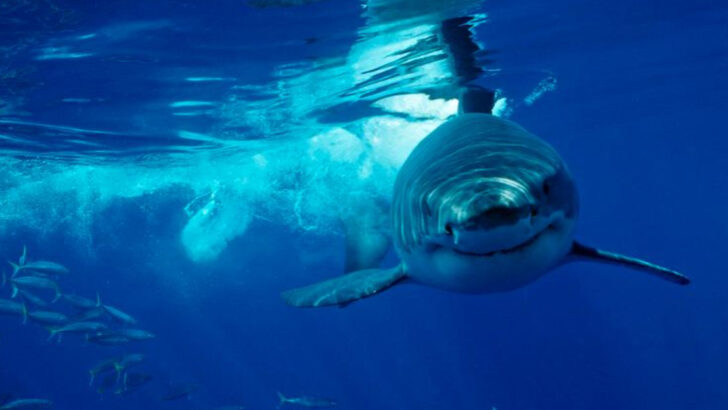Speed isn’t just for cheetahs and falcons—some fish could leave even the fastest land animals in their wake. Beneath the ocean’s surface, an intense race for survival unfolds every second.
Some fish dart like underwater missiles, clocking speeds that rival sports cars. They streak through the waves, chasing prey or evading predators with lightning-fast precision. Marlins, tuna, and sailfish aren’t just impressive—they’re built for pure, unrelenting speed.
What makes these fish so fast? Sleek bodies, powerful tails, and an almost unfair advantage in the art of slicing through water. Whether they’re launching into the air or vanishing in a blink, these 21 species prove that the ocean is home to some of the world’s greatest speed demons.
Black Marlin
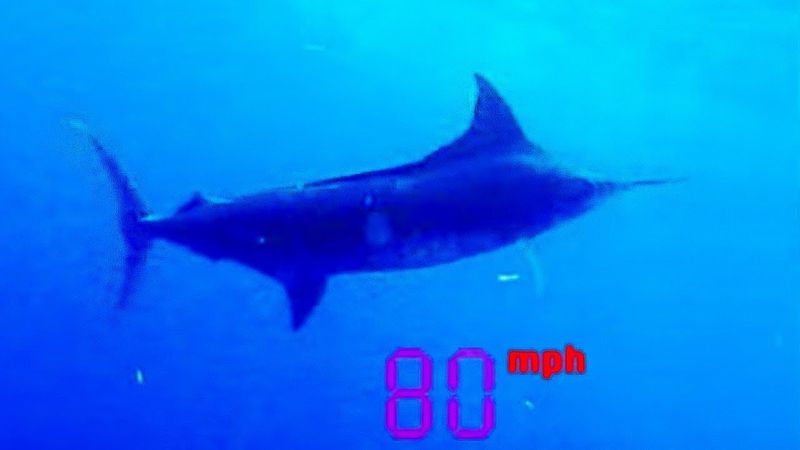
The black marlin is revered for its incredible speed, reaching over 82 mph (132 km/h). This majestic fish, often found in the warm waters of the Indian and Pacific Oceans, is a marvel to behold. Its elongated body and pointed bill allow it to slice through water with minimal resistance.
Black marlins are not only fast, but they are also highly sought after in sport fishing, admired for their strength and agility. Their streamlined shape is perfectly adapted for fast swimming, making them one of the ocean’s most efficient predators.
Sailfish
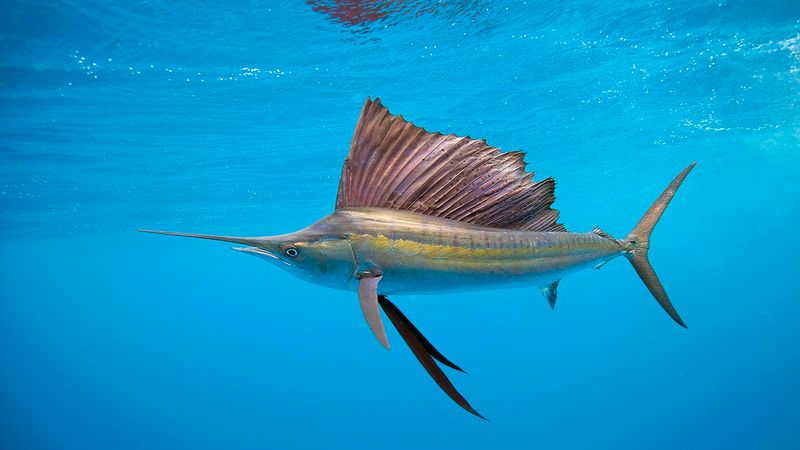
Sailfish are renowned for their speed, capable of reaching up to 68 mph (110 km/h). Their iconic sail-like dorsal fin and striking appearance make them easy to recognize. This adaptation helps them in quick directional changes while hunting.
Found in both the Atlantic and Pacific Oceans, sailfish are highly prized in sport fishing circles. Their ability to leap out of the water adds to the thrill of catching one. These fish are not just about speed; their vibrant colors and dynamic presence make them a fascinating subject for marine enthusiasts.
Swordfish
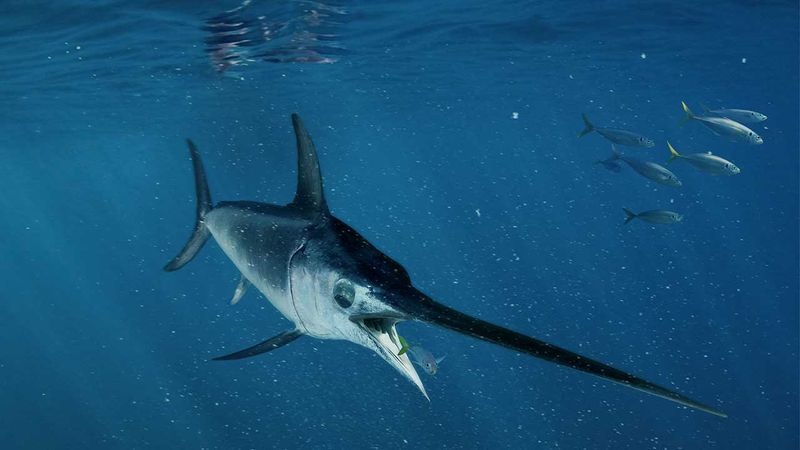
Swordfish are swift and powerful swimmers, cruising at speeds of 60 mph (97 km/h). The long, flat bill of the swordfish is its most distinctive feature, used effectively to slash at prey and reduce drag.
These fish are often found in tropical and temperate parts of the ocean. Their speed is complemented by a unique heat exchange system that allows them to keep their brain and eyes warmer than the surrounding water, enhancing their hunting efficiency. Swordfish are not just fast but are also a testament to evolutionary ingenuity.
Yellowfin Tuna
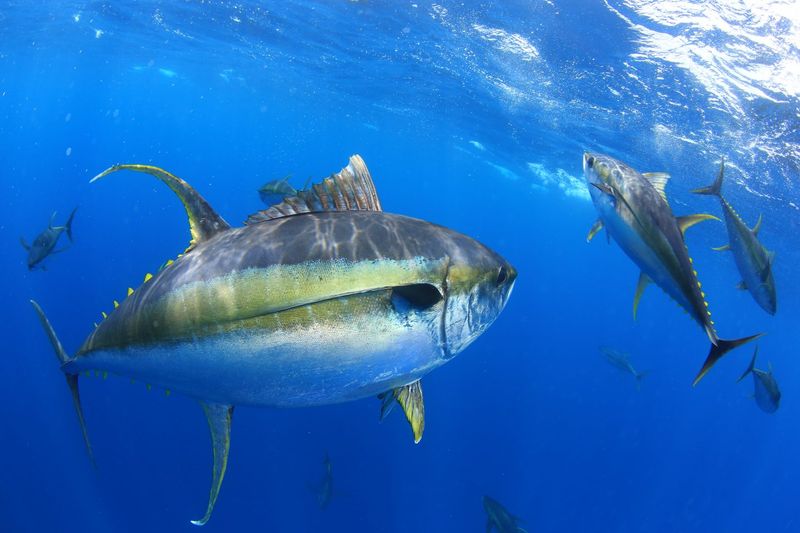
The yellowfin tuna is a sleek, torpedo-shaped fish known for its speed, reaching up to 50 mph (80 km/h). This species is a pelagic fish found in tropical and subtropical oceans worldwide. Its streamlined body allows it to move swiftly in pursuit of prey.
Yellowfin tuna are highly migratory and play a pivotal role in the marine food chain. Their speed and agility make them formidable hunters, often traveling in schools for protection. This species is also vital to commercial fisheries, valued not only for its speed but also for its culinary appeal.
Bluefin Tuna
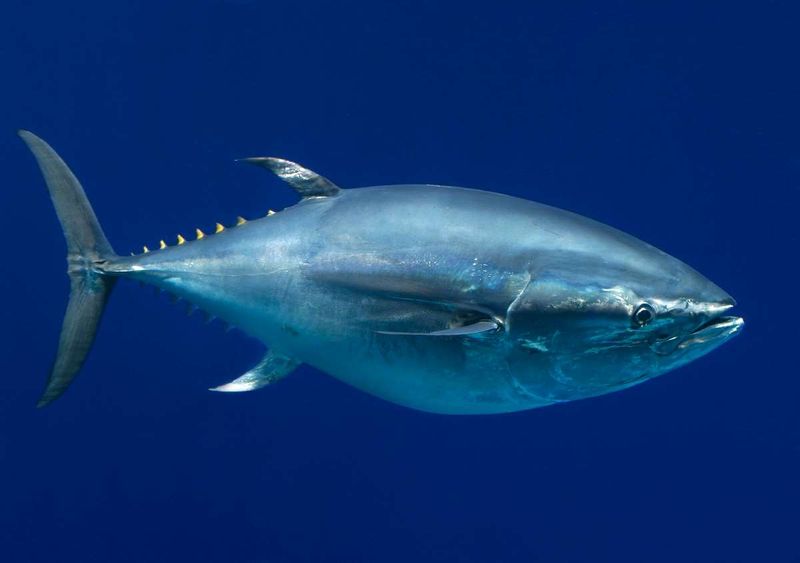
Bluefin tuna are among the largest and fastest fish in the ocean, capable of speeds up to 43 mph (69 km/h). These powerful swimmers, found in both the Atlantic and Pacific Oceans, are known for their endurance and strength.
Bluefin tunas are prized in both commercial and sport fishing due to their size and speed. Their ability to travel vast distances across oceans highlights their adaptability and resilience. The sleek, metallic blue appearance of the bluefin tuna is as impressive as its speed, making it a true jewel of the sea.
Mako Shark
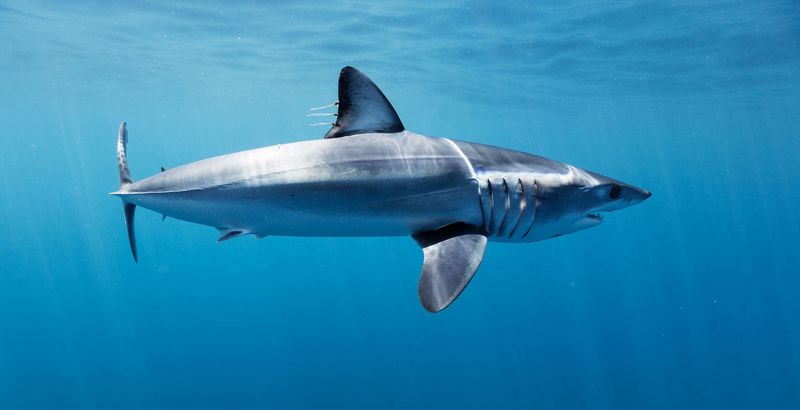
The mako shark is famed for its speed and agility, reaching up to 45 mph (72 km/h). This shark’s streamlined body and pointed snout minimize drag, allowing it to navigate quickly through the water. Mako sharks are found in temperate and tropical oceans worldwide.
These apex predators are known for their impressive hunting skills, targeting fast-moving prey like tuna and squid. The mako’s speed is not just for hunting but also for avoiding larger predators. With their sleek design and swift movements, mako sharks are among the most efficient hunters of the sea.
Wahoo
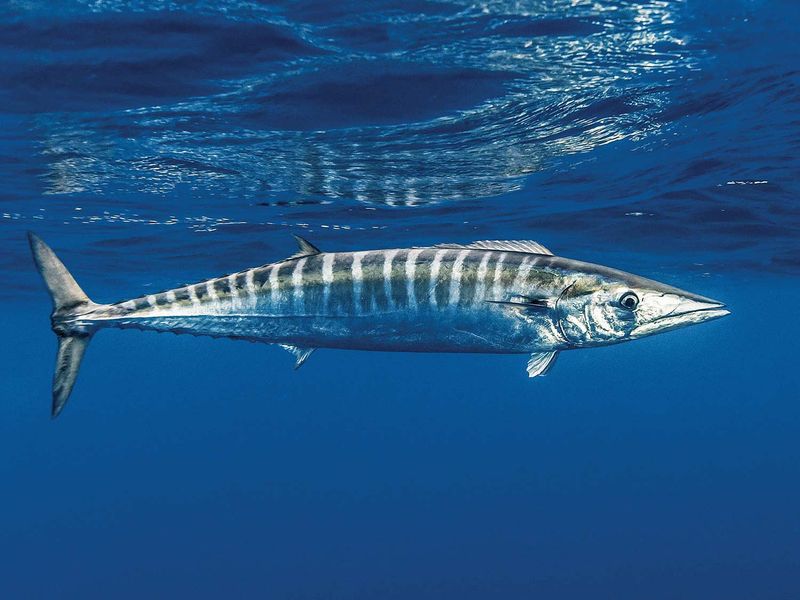
Wahoos are renowned for their speed, reaching up to 48 mph (77 km/h). These slender fish have elongated, torpedo-shaped bodies that help them cut through the water effortlessly. Wahoos are typically found in tropical and subtropical ocean waters.
Their speed makes them a popular choice among sport fishermen. The wahoo’s sharp teeth and quick movements make it a formidable predator, often targeting smaller fish and squid. Known for their excellent taste, wahoos are also highly valued in culinary circles. Their quick bursts of speed and agility make them fascinating to observe.
Atlantic Blue Marlin
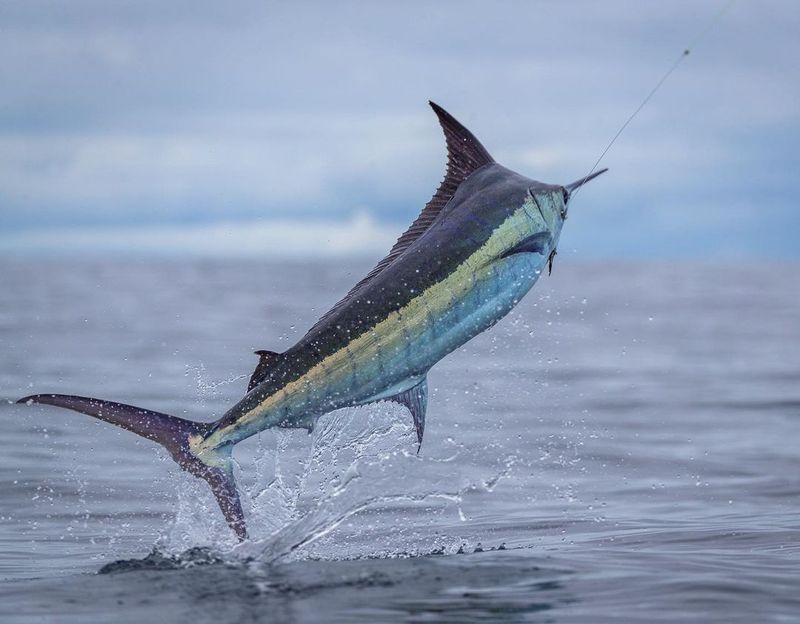
The Atlantic blue marlin is renowned for its power and speed, reaching speeds of up to 60 mph (97 km/h). This large predatory fish inhabits the warm waters of the Atlantic Ocean, using its elongated bill to hunt swiftly through schools of fish.
Blue marlins are highly prized in sport fishing, known for their acrobatic leaps and formidable size. Their speed and strength are matched by their striking appearance, with vibrant blue coloring that captivates observers. As one of the apex predators of the ocean, the Atlantic blue marlin is both a marvel and a challenge for fishermen.
Bonito
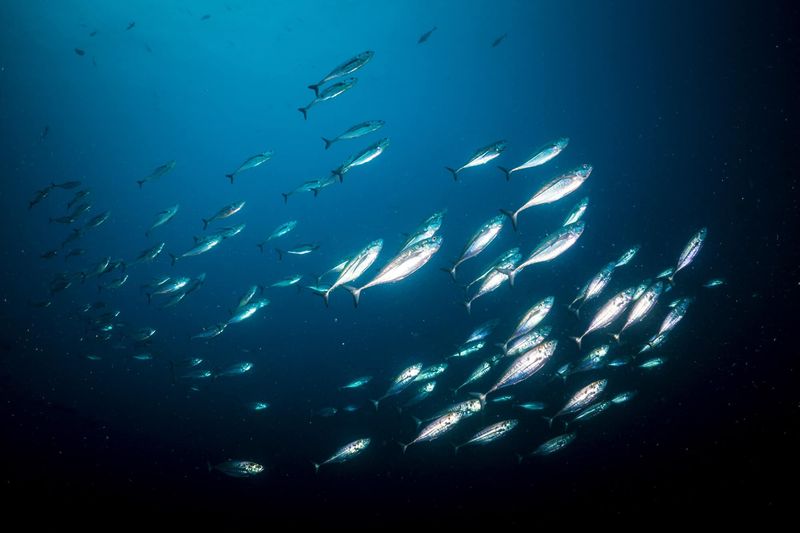
Bonito are fast swimmers, capable of reaching speeds up to 40 mph (64 km/h). These medium-sized fish are commonly found in the Atlantic and Mediterranean, known for their swift movements and agile hunting abilities.
Bonitos are often found in large schools, which helps in hunting and protection from predators. They primarily feed on smaller fish and squid, using their speed to outmaneuver prey. These fish are not only known for their speed but are also popular in regional cuisines. Their dynamic swimming patterns make bonito a captivating sight in the ocean.
Dorado (Mahi Mahi)
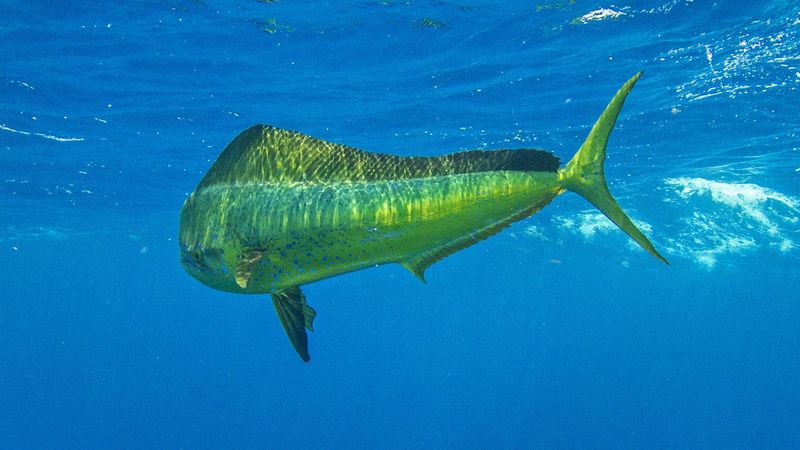
The dorado, also known as mahi-mahi, is celebrated for its speed and vibrant coloration. Capable of reaching speeds up to 50 mph (80 km/h), these fish are often found in warm ocean waters near the surface.
Mahi-mahi are known for their acrobatic displays, often leaping out of the water when hooked. Their bright green and gold hues make them one of the most beautiful fish in the ocean. Beyond their speed, dorados are highly sought after in sport fishing and are renowned for their taste. Their presence adds a splash of color and excitement to the marine environment.
Great White Shark
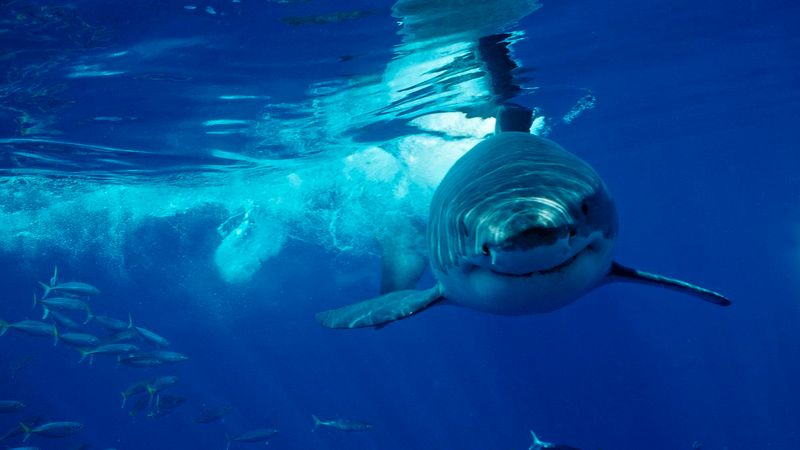
The great white shark, while not the fastest, can reach speeds up to 25 mph (40 km/h), impressive for its size. Known for its power and predatory prowess, this shark is one of the ocean’s top predators.
Found in coastal waters worldwide, great whites use bursts of speed to ambush prey, including seals and other marine mammals. Their speed is complemented by powerful jaws and acute senses, making them formidable hunters. The sheer presence of a great white shark is enough to command respect and fear, as these creatures have perfected their hunting techniques over millennia.
Barracuda
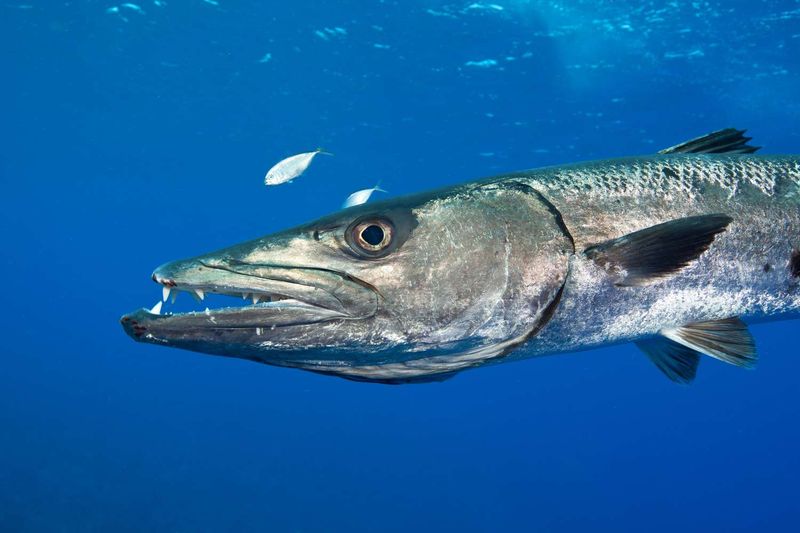
Barracudas are known for their quick bursts of speed, reaching up to 36 mph (58 km/h). These elongated fish inhabit tropical and subtropical oceans around the world, using their speed to ambush prey.
Their keen eyesight and sharp teeth make barracudas effective hunters, often targeting smaller fish. Despite their fearsome reputation, barracudas are curious by nature and may approach divers. Their speed and agility, combined with a streamlined body, allow them to navigate coral reefs with ease. Observing a barracuda in its natural environment is both thrilling and fascinating.
Flying Fish
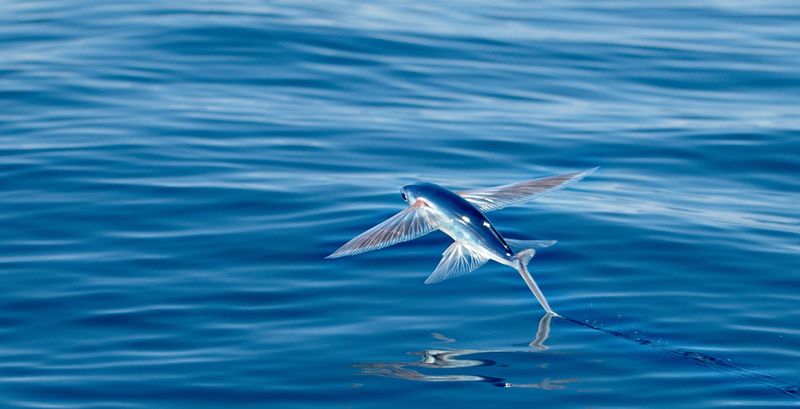
Flying fish are unique in their ability to glide through the air, reaching speeds of 35 mph (56 km/h) when airborne. Found in warm ocean waters worldwide, they use this ability to escape predators.
When chased, flying fish propel themselves out of the water, extending their wing-like fins to glide over distances as far as 200 meters. This extraordinary adaptation not only provides a quick escape but also captivates onlookers with their aerial acrobatics. The ability to glide is a remarkable evolutionary trait, showcasing the ingenuity of nature in the open ocean.
Albacore Tuna
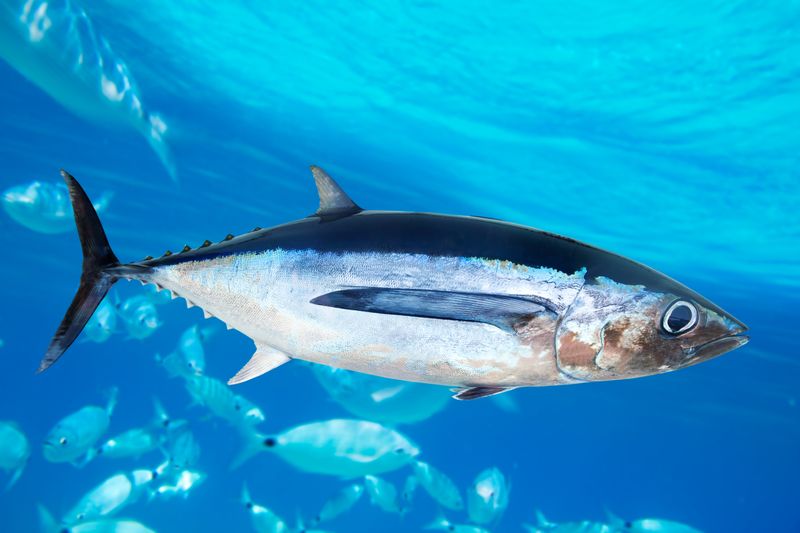
Albacore tuna are agile swimmers, reaching speeds up to 40 mph (64 km/h). These fish are prized for their light flesh, commonly found in both recreational and commercial fishing across the Atlantic and Pacific Oceans.
Their long pectoral fins and streamlined bodies enable quick and efficient movement through the water. Albacores often form large schools, enhancing their hunting and migratory behaviors. As a migratory species, they travel vast distances, showcasing their endurance and speed. Albacore tuna’s contribution to global fisheries underscores their importance in marine biodiversity and human consumption.
Skipjack Tuna
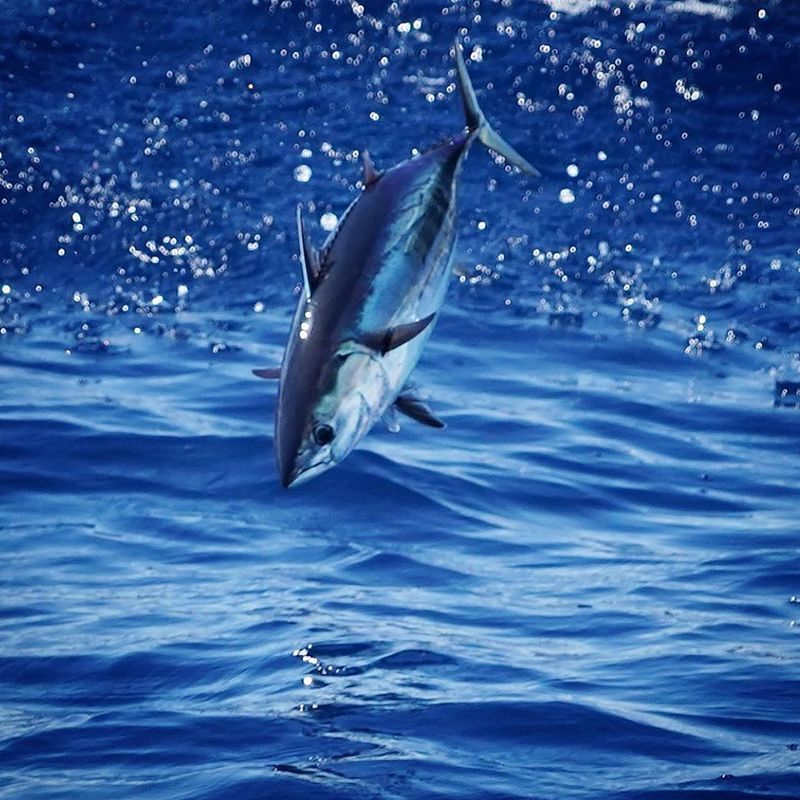
Skipjack tuna are known for their speed and agility, reaching up to 40 mph (64 km/h). These fish inhabit tropical and subtropical oceans, forming large schools that can travel great distances.
Skipjacks are characterized by their torpedo-shaped bodies and distinct horizontal stripes. They are a significant species in the fishing industry, commonly used in canned tuna products. Their speed and ability to travel vast distances make them formidable hunters and essential players in the marine ecosystem. The skipjack’s robust nature and migratory habits highlight its vital role in oceanic life.
Blue Shark
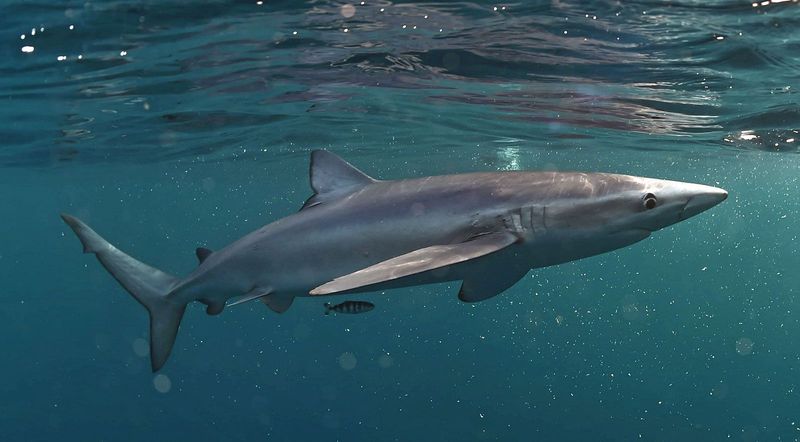
Blue sharks are elegant swimmers, capable of reaching speeds up to 24 mph (39 km/h). These sharks are found in deep oceanic waters worldwide, recognized for their slender bodies and long pectoral fins.
Their speed allows them to cover vast distances in search of food and mates. Blue sharks are opportunistic feeders, often preying on squid and small fish. Their graceful swimming and striking appearance contribute to their reputation as one of the ocean’s most beautiful sharks. Observing a blue shark in its natural habitat is both serene and inspiring.
King Mackerel
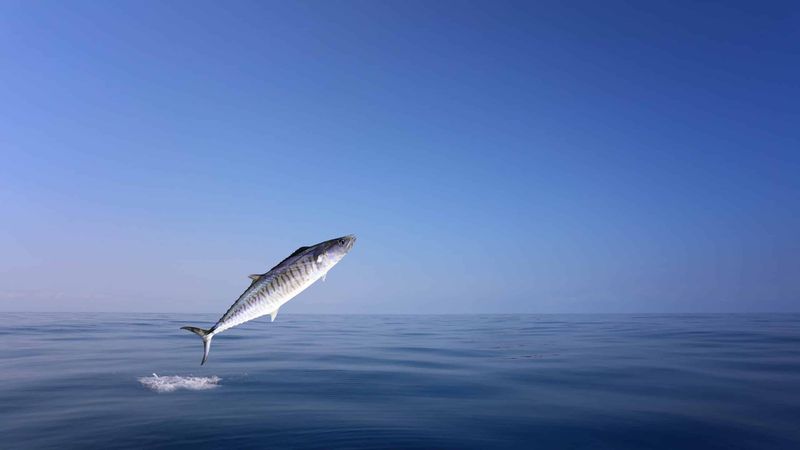
King mackerel are fast and agile, reaching speeds up to 40 mph (64 km/h). These fish are commonly found along the coastlines of the western Atlantic Ocean, known for their rapid movements and predatory skills.
Their streamlined bodies and sharp teeth allow them to hunt effectively, often targeting smaller fish. King mackerels are popular in sport fishing due to their speed and fight when hooked. Their presence in coastal ecosystems highlights their role as both predator and prey. Observing the swift movements of a king mackerel is a testament to its mastery of the marine environment.
Rainbow Runner
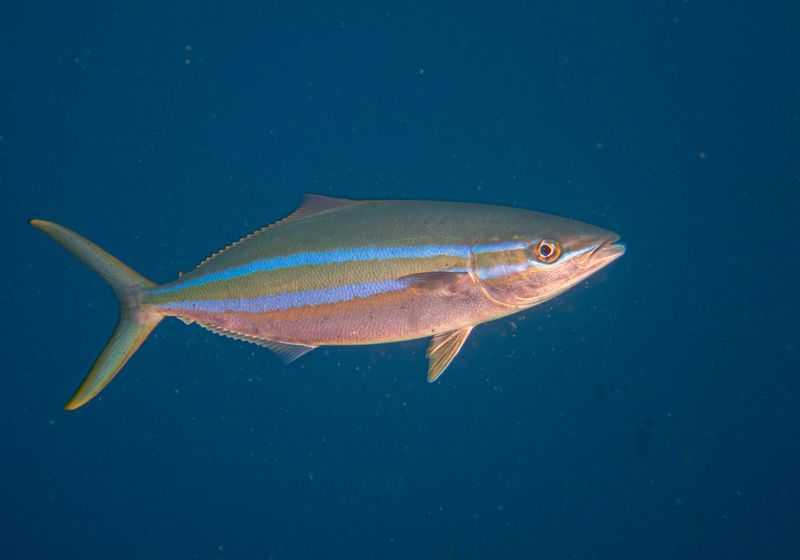
Rainbow runners are swift and agile, reaching speeds of up to 37 mph (60 km/h). These vibrant fish inhabit tropical and subtropical ocean waters, often found near coral reefs.
Their name comes from their stunning coloration, featuring hues of blue, green, and yellow. Rainbow runners are not only beautiful but also efficient hunters, using their speed to chase down smaller prey. Their dynamic presence in the ocean makes them a favorite among divers and snorkelers. The combination of speed, color, and grace makes the rainbow runner a captivating sight in marine environments.
Giant Trevally
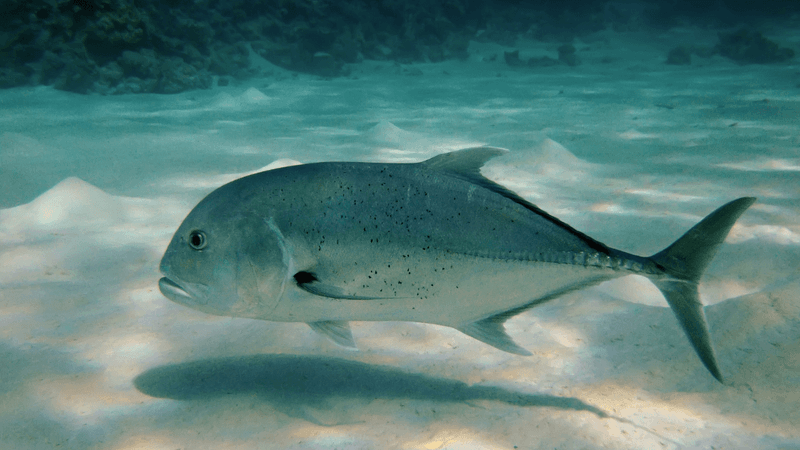
Giant trevallies are powerful swimmers, capable of reaching speeds up to 37 mph (60 km/h). These robust fish are found in the tropical waters of the Indo-Pacific region, often near coral reefs and rocky outcrops.
Known for their strength and agility, giant trevallies are formidable predators, often hunting in packs. Their large, muscular bodies and keen senses make them adept at capturing a variety of prey. The giant trevally’s role in the ecosystem as a top predator is crucial, maintaining the balance of marine life. Anglers often seek them out for their challenging catch.
Dogtooth Tuna
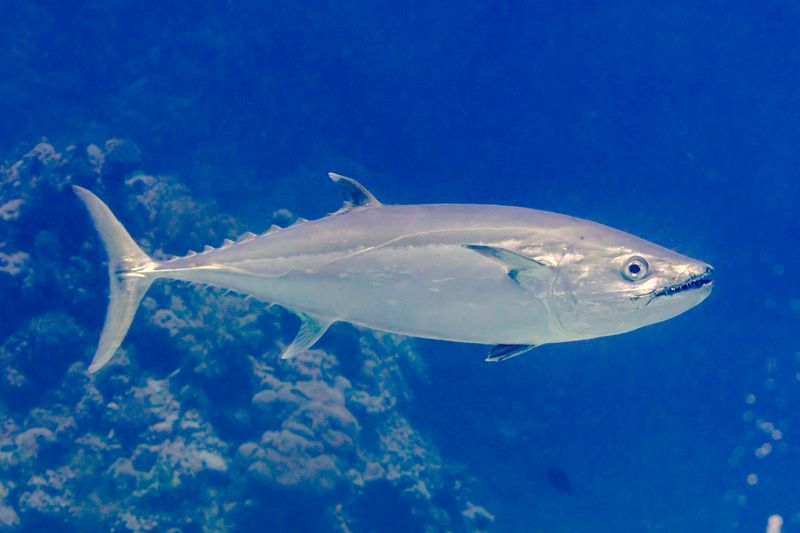
Dogtooth tuna are known for their speed and strength, reaching up to 50 mph (80 km/h). These powerful predators inhabit tropical and subtropical waters, often found near coral reefs.
Their name comes from their prominent, sharp teeth, which aid in capturing prey. Dogtooth tuna are highly prized in sport fishing due to their fighting ability and are valued for their culinary appeal. Their presence in the reef ecosystem plays a vital role in controlling fish populations. With their impressive speed and agility, dogtooth tuna are a testament to nature’s design.
Shortfin Mako Shark
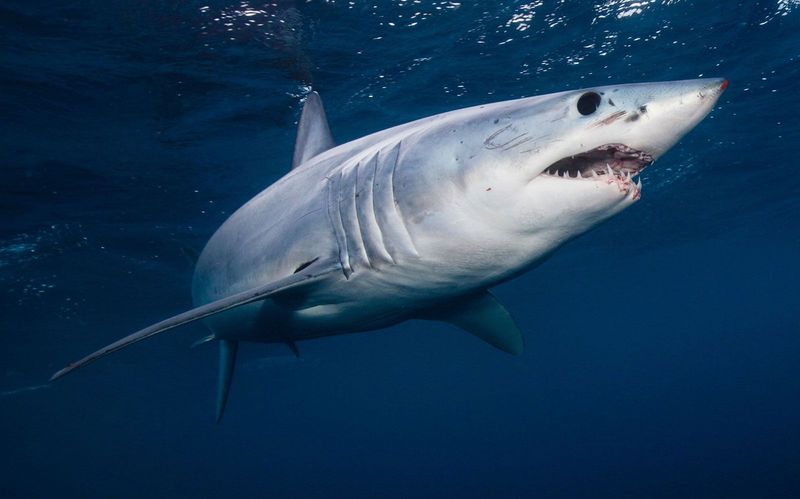
The Shortfin Mako Shark, often dubbed the ‘cheetah of the ocean’, is one of the fastest swimmers in the sea. Its streamlined, torpedo-shaped body allows it to reach speeds of up to 45 miles per hour. This incredible speed is vital for hunting fast-moving prey such as tuna and mackerel.
Despite its speed, the Shortfin Mako Shark is a relatively small shark, rarely growing beyond 12 feet in length. Its agility and speed not only make it a formidable predator but also a spectacular sight for divers and marine enthusiasts.
Efforts are ongoing to conserve this remarkable species, as it faces threats from overfishing and habitat loss.

